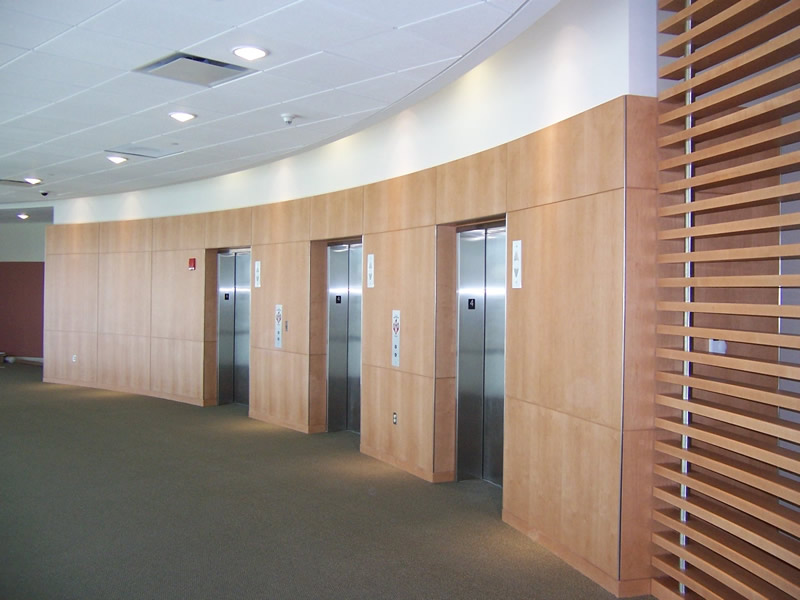 I recently had a question asked about whether two smoke detectors are required to activate simultaneously in a single elevator lobby in order for cab recall to be initiated. The answer is there is no current national code that requires two detectors to activate before recall occurs. The two detector activation is what we call ‘cross zoning’, and it’s a vestige of the old days. Before addressable detectors came out, there was a much higher chance of a smoke detector activating due to cigar smoke, dust, etc. Since elevators can be a valuable means of building egress, code officials needed a way to keep the elevators from recalling before necessary. As a result, most municipalities required two independently wired smoke detectors in each elevator lobby. The thinking was if properly spaced, only a large and steady amount of smoke would be enough to set off both of these detectors, so they used that method of verification before recall initiated. However, any addressable smoke detector installed within the last twenty years is much more reliable and can be programmed to internally verify the alarm condition before it activates, eliminating the need for cross zoning. The reason you may still see this in some facilities is if the fire alarm system is non-addressable and/or old.
I recently had a question asked about whether two smoke detectors are required to activate simultaneously in a single elevator lobby in order for cab recall to be initiated. The answer is there is no current national code that requires two detectors to activate before recall occurs. The two detector activation is what we call ‘cross zoning’, and it’s a vestige of the old days. Before addressable detectors came out, there was a much higher chance of a smoke detector activating due to cigar smoke, dust, etc. Since elevators can be a valuable means of building egress, code officials needed a way to keep the elevators from recalling before necessary. As a result, most municipalities required two independently wired smoke detectors in each elevator lobby. The thinking was if properly spaced, only a large and steady amount of smoke would be enough to set off both of these detectors, so they used that method of verification before recall initiated. However, any addressable smoke detector installed within the last twenty years is much more reliable and can be programmed to internally verify the alarm condition before it activates, eliminating the need for cross zoning. The reason you may still see this in some facilities is if the fire alarm system is non-addressable and/or old.
Whether one or two detectors are required in an elevator lobby comes down to the local requirements. Inertia is a powerful force and many jurisdictions perpetuate old requirements because it may take a lot of work to change a code. Keeping designers of record, as well as local fire and code officials up to speed on how modern systems operate and their programming options can also facilitate change. If your local building department, like most, uses ASME 17.1 for its elevator code without exception, ASME 17.1 Chapter 2.27.3.2.3 states “The activation of a fire alarm initiating device specified in 2.27.3.2.1 or 2.27.3.2.2(a) shall cause all elevators…to return non-stop to the designated level.” Your local elevator code would have to amend the code to specifically require cross zoning in order for that to be a current requirement. NFPA 72 (Fire Alarm & Signaling Code) does not mention cross zoning either.
Affiliated Fire Systems has the equipment, expertise and support you need to install a problem free fire alarm and/or emergency voice system. If you have any questions regarding your life safety needs, contact us via our ‘Contact Us’ page on our website, or email me directly at generowe@affiliatedinc.com.


Send us a Comment